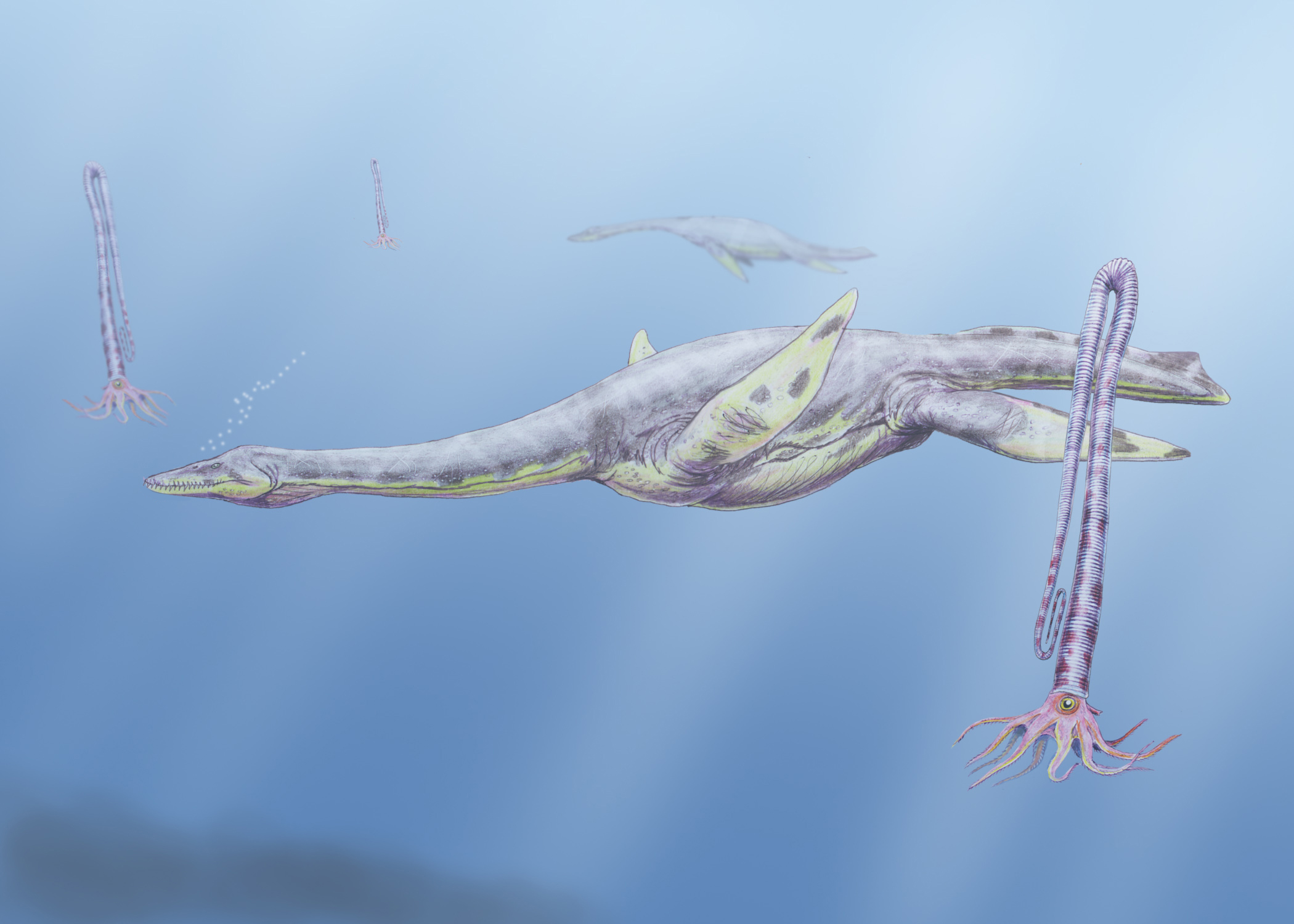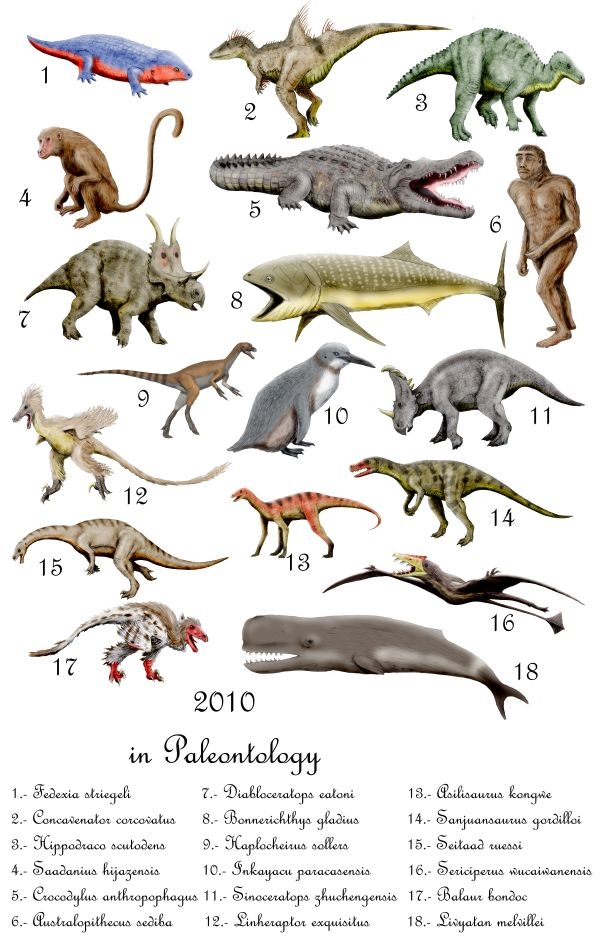|
List Of Plesiosaur Genera
This list of plesiosaurs is a comprehensive listing of all genera that have ever been included in the order Plesiosauria, excluding purely vernacular terms. The list includes all commonly accepted genera, but also genera that are now considered invalid, doubtful (''nomen dubium''), or were not formally published (''nomen nudum''), as well as junior synonyms of more established names, and genera that are no longer considered plesiosaurs. The list currently includes 201 genera. Scope and terminology There is no official, canonical list of plesiosaur genera but one of the most thorough attempts can be found on the Plesiosauria section of Mikko Haaramo's Phylogeny Archive; also pertinent is the Plesiosaur Genera section at Adam Stuart Smith's Plesiosaur Directory.See Smith, ''Plesiosaur Genera''. Naming conventions and terminology follow the International Code of Zoological Nomenclature. Technical terms used include: * Junior synonym: A name which describes the same taxon as a previou ... [...More Info...] [...Related Items...] OR: [Wikipedia] [Google] [Baidu] |
Genus
Genus ( plural genera ) is a taxonomic rank used in the biological classification of living and fossil organisms as well as viruses. In the hierarchy of biological classification, genus comes above species and below family. In binomial nomenclature, the genus name forms the first part of the binomial species name for each species within the genus. :E.g. '' Panthera leo'' (lion) and '' Panthera onca'' (jaguar) are two species within the genus ''Panthera''. ''Panthera'' is a genus within the family Felidae. The composition of a genus is determined by taxonomists. The standards for genus classification are not strictly codified, so different authorities often produce different classifications for genera. There are some general practices used, however, including the idea that a newly defined genus should fulfill these three criteria to be descriptively useful: # monophyly – all descendants of an ancestral taxon are grouped together (i.e. phylogenetic analysis should c ... [...More Info...] [...Related Items...] OR: [Wikipedia] [Google] [Baidu] |
Albertonectes
''Albertonectes'' is an extinct genus of elasmosaurid plesiosaur known from the Late Cretaceous (middle upper Campanian stage) Bearpaw Formation of Alberta, Canada. It contains a single species, ''Albertonectes vanderveldei''. ''Albertonectes'' is the longest elasmosaur, and more generally plesiosaur, known to date both in neck and total body length. Discovery ''Albertonectes'' is known solely from the holotype TMP 2007.011.0001, a complete well preserved postcranial skeleton housed at the Royal Tyrrell Museum of Palaeontology in Drumheller, Alberta. Elements include all 132 vertebrae from the atlas-axis complex to fused tip of the tail vertebrae, complete pectoral and incomplete pelvic girdles, almost complete forelimbs and hindlimbs, disarticulated ribs, a gastralium, and at least 97 associated gastroliths. TMP 2007.011.0001 was discovered during mining for gem-quality ammonite shell called Ammolite by Korite International Ltd. about 150 meters south of t ... [...More Info...] [...Related Items...] OR: [Wikipedia] [Google] [Baidu] |
2015 In Paleontology
Fifteen or 15 may refer to: * 15 (number), the natural number following 14 and preceding 16 *one of the years 15 BC, AD 15, 1915, 2015 Music *Fifteen (band), a punk rock band Albums * ''15'' (Buckcherry album), 2005 * ''15'' (Ani Lorak album), 2007 * ''15'' (Phatfish album), 2008 * ''15'' (mixtape), a 2018 mixtape by Bhad Bhabie * ''Fifteen'' (Green River Ordinance album), 2016 * ''Fifteen'' (The Wailin' Jennys album), 2017 * ''Fifteen'', a 2012 album by Colin James Songs * "Fifteen" (song), a 2008 song by Taylor Swift *"Fifteen", a song by Harry Belafonte from the album '' Love Is a Gentle Thing'' *"15", a song by Rilo Kiley from the album '' Under the Blacklight'' *"15", a song by Marilyn Manson from the album ''The High End of Low'' *" The 15th", a 1979 song by Wire Other uses *Fifteen, Ohio, a community in the United States * ''15'' (film), a 2003 Singaporean film * ''Fifteen'' (TV series), international release name of ''Hillside'', a Canadian-American teen drama ... [...More Info...] [...Related Items...] OR: [Wikipedia] [Google] [Baidu] |
Anguanax
''Anguanax'' is an extinct genus of basal pliosaurid known from the Late Jurassic (Oxfordian stage) Rosso Ammonitico Veronese Formation of northern Italy. It contains a single species, ''Anguanax zignoi'', known from a partially complete individual, representing the first articulated skeleton of an Italian plesiosaurian. Discovery and naming ''Anguanax'' is known solely from the holotype MPPL 18797, currently housed at the Museo Paleontologico e della Preistoria ‘P. Leonardi’ in Ferrara. The skeleton, still articulated in several blocks of limestone, consists of a partial skull including the lower jaw, 32 isolated teeth, neck, back and tail vertebrae, a right pectoral girdle, a partial left humerus, a left radius, a left ulna, three left carpals, a partial pelvis, a femur, two epipodials, isolated metapodials and phalanges. It was collected during the 1980s from a nodular and cherty limestone interval at the Kaberlaba quarry in the Asiago Municipality of the Vicenza ... [...More Info...] [...Related Items...] OR: [Wikipedia] [Google] [Baidu] |
1943 In Paleontology
Dinosaurs Newly named dinosaurs Data are courtesy of George Olshevky's dinosaur genera list. Plesiosaurs New taxa Synapsids Non-mammalian References {{portal, Paleontology [...More Info...] [...Related Items...] OR: [Wikipedia] [Google] [Baidu] |
Alzadasaurus
''Thalassomedon'' (from Greek, ''thalassa'', "sea" and Greek, ''medon'', "lord" or "ruler", meaning "sea lord") is a genus of plesiosaur, named by Welles in 1943. Description ''Thalassomedon'' is among the largest elasmosaurids, with a total length of for the holotype. There is a larger skull, however, suggesting a much larger animal, potentially up to . Gregory S. Paul proposed that a long individual would have weighed , while O'Gorman and his colleagues proposed that a long individual would have weighed more than . The neck is also very long; it comprises 62 vertebraeCarpenter, K. (1999). "Revision of North American elasmosaurs from the Cretaceous western interior." ''Paludicola'', 2(2): 148-173. and is about - over half of the total length. The skull is long, with long teeth. The flippers were about long. Stones have been found in its stomach area leading some to theorize that they were used for ballast or digestion. If the latter, stomach action would cause the ston ... [...More Info...] [...Related Items...] OR: [Wikipedia] [Google] [Baidu] |
Late Triassic
The Late Triassic is the third and final epoch (geology), epoch of the Triassic geologic time scale, Period in the geologic time scale, spanning the time between annum, Ma and Ma (million years ago). It is preceded by the Middle Triassic Epoch and followed by the Early Jurassic Epoch. The corresponding series (stratigraphy), series of rock beds is known as the Upper Triassic. The Late Triassic is divided into the Carnian, Norian and Rhaetian Geologic time scale, Ages. Many of the first dinosaurs evolved during the Late Triassic, including ''Plateosaurus'', ''Coelophysis'', and ''Eoraptor''. The Triassic–Jurassic extinction event began during this epoch and is one of the five major mass extinction events of the Earth. Etymology The Triassic was named in 1834 by Friedrich August von Namoh, Friedrich von Alberti, after a succession of three distinct rock layers (Greek meaning 'triad') that are widespread in southern Germany: the lower Buntsandstein (colourful sandstone'')'', t ... [...More Info...] [...Related Items...] OR: [Wikipedia] [Google] [Baidu] |
2010 In Paleontology
Plants Angiosperms Molluscs Newly named bivalves Arthropods Fishes Amphibians Newly named amphibians Basal reptiles Newly named basal reptiles Ichthyopterygians Newly named ichthyopterygians Lepidosauromorphs Newly named plesiosaurs Newly named basal lepidosaurs Newly named lizards Newly named snakes Turtles Newly named turtles Archosauromorphs Newly named basal archosauromorphs Archosaurs Synapsids Newly named non-mammalian synapsids Mammals Other animals Footnotes Complete author list As science becomes more collaborative, papers with large numbers of authors are becoming more common. To prevent the deformation of the tables, these footnotes list the contributors to papers that erect new genera and have many authors. References {{Reflist, 2 2010 in paleontology, ... [...More Info...] [...Related Items...] OR: [Wikipedia] [Google] [Baidu] |
Alexeyisaurus
''Alexeyisaurus'' is an extinct genus of possible plesiosaur known from the upper Triassic (lower-middle Norian age) of Wilczek Formation, Wilczek Land, of Franz Josef Land, Russia. It was first named by A. G. Sennikov and M. S. Arkhangelsky in 2010 and the type species In zoological nomenclature, a type species (''species typica'') is the species name with which the name of a genus or subgenus is considered to be permanently taxonomically associated, i.e., the species that contains the biological type specimen( ... is ''Alexeyisaurus karnoushenkoi''. While considered an elasmosaur in the initial publication It has been described as a "partial, poorly preserved, and undiagnostic sauropterygian skeleton" in subsequent publications. See also * Timeline of plesiosaur research * List of plesiosaur genera References Elasmosaurids Triassic plesiosaurs Fossil taxa described in 2010 Extinct animals of Russia Plesiosaurs of Europe Plesiosaurs of Asia Sauropterygian ... [...More Info...] [...Related Items...] OR: [Wikipedia] [Google] [Baidu] |
Australasia
Australasia is a region that comprises Australia, New Zealand and some neighbouring islands in the Pacific Ocean. The term is used in a number of different contexts, including geopolitically, physiogeographically, philologically, and ecologically, where the term covers several slightly different, but related regions. Derivation and definitions Charles de Brosses coined the term (as French ''Australasie'') in ''Histoire des navigations aux terres australes'' (1756). He derived it from the Latin for "south of Asia" and differentiated the area from Polynesia (to the east) and the southeast Pacific ( Magellanica). In the late 19th century, the term Australasia was used in reference to the "Australasian colonies". In this sense it related specifically to the British colonies south of Asia: New South Wales, Queensland, South Australia, Tasmania, Western Australia, Victoria (i.e., the Australian colonies) and New Zealand. Australasia found continued geopolitical attention in ... [...More Info...] [...Related Items...] OR: [Wikipedia] [Google] [Baidu] |
2016 In Paleontology
Flora Plants Fungi Cnidarians Research * '' Yunnanoascus haikouensis'', previously thought to be a member of Ctenophora, is reinterpreted as a crown-group medusozoan by Han ''et al.'' (2016). * A study on the fossil corals from the Late Triassic (Norian) outcrops in Antalya Province (Turkey), indicating that the corals lived in symbiosis with photosynthesizing dinoflagellate algae, is published by Frankowiak ''et al.'' (2016). New taxa Arthropods Bryozoans Brachiopods Molluscs Echinoderms Conodonts Fishes Amphibians Research * A study on the histology and growth histories of the humeri of the specimens of '' Acanthostega'' recovered from the mass-death deposit of Stensiö Bjerg (Greenland) is published by Sanchez ''et al.'' (2016), who argue that even the largest individuals from this deposit are juveniles. * Fossils of a tetrapod resembling ''Ichthyostega'' and a probable whatcheeriid- grade tetrapod are described from two Devonian (Famennian) localit ... [...More Info...] [...Related Items...] OR: [Wikipedia] [Google] [Baidu] |
Alexandronectes
''Alexandronectes'' is a genus of elasmosaurid plesiosaur, a type of long-necked marine reptile, that lived in the oceans of Late Cretaceous New Zealand. It contains one species, ''A. zealandiensis''. Fossils of ''Alexandronectes'' were found in the Conway Formation of Canterbury, at .org which can be dated to the Early stage of the . Fossils of it were found around 1872 near the W ... [...More Info...] [...Related Items...] OR: [Wikipedia] [Google] [Baidu] |






